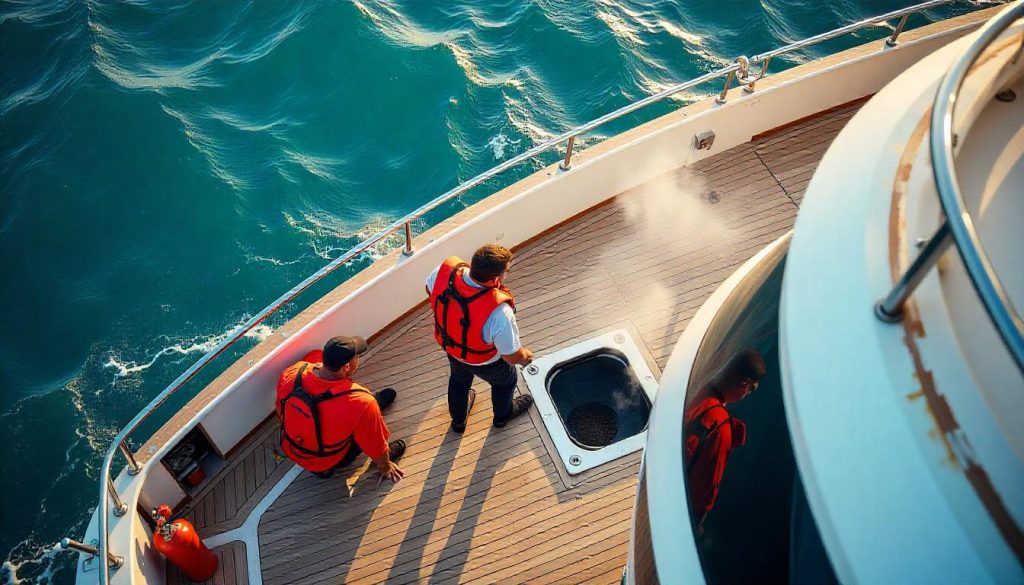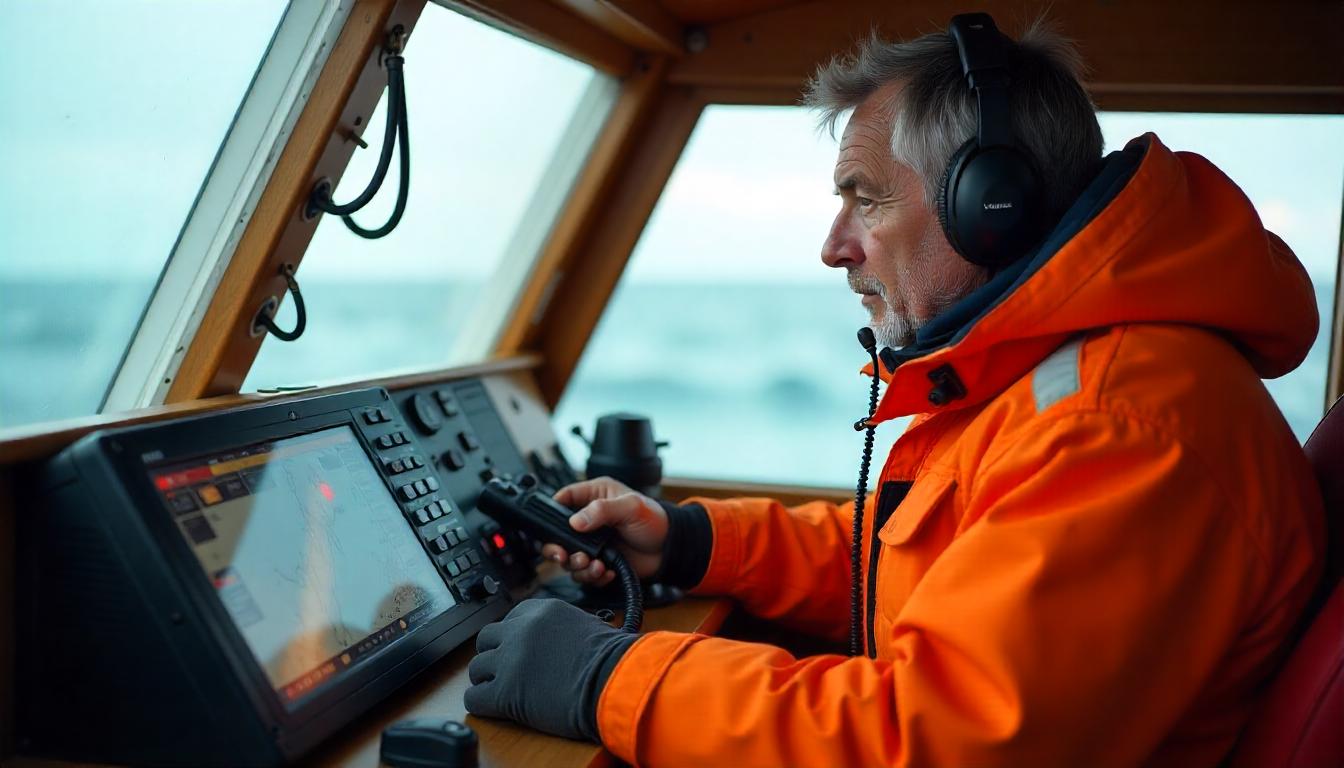The vastness and unpredictability of the ocean, while inviting, also present inherent risks. Even the most seasoned mariner, meticulously prepared, can face unforeseen challenges. Therefore, understanding marine emergency response is not merely advisable; it is a critical skill that can mean the difference between a manageable incident and a catastrophic disaster. From a peaceful cruise near Aktobe’s waterways to a challenging offshore passage, every boat owner and crew member must be ready to act swiftly and effectively when an emergency strikes. This guide outlines the essential steps, equipment, and mindset required to handle various crises at sea.
The Foundation of Readiness: Preparation Before Departure
Effective sea emergency procedures always begin long before you cast off lines. Proactive measures and a well-informed crew are your first and most vital lines of defense.
Comprehensive Vessel Maintenance
A well-maintained vessel is inherently safer. Regular inspections and adherence to a strict maintenance schedule prevent many potential emergencies. Before every trip, conduct thorough checks of your engine, electrical systems, steering, and rigging. Look for signs of wear, corrosion, or leaks. Ensure all seacocks operate smoothly. A reliable vessel significantly reduces the likelihood of mechanical failures or structural integrity issues at sea.
Essential Safety Equipment Onboard
Having the right equipment is non-negotiable. Moreover, knowing where it is stored and how to use it is equally crucial.
- Personal Flotation Devices (PFDs): Ensure you have enough PFDs for everyone on board, readily accessible, and in good condition. Consider wearing PFDs, especially in rough conditions or when single-handing.
- Fire Extinguishers: Mount marine-rated fire extinguishers in key locations (galley, engine room, helm). Learn how to use them effectively and check their expiry dates regularly.
- First Aid Kit: Equip a comprehensive, well-stocked marine first aid kit. At least one person on board should have basic first aid training.
- Communication Devices: A reliable VHF radio is paramount for short-range communication with other vessels and rescue authorities (Channel 16 for distress). For offshore voyages, a satellite phone or an Iridium GO! is essential.
- Distress Signals: Carry visual distress signals such as flares (red for night, orange smoke for day), an emergency position-indicating radio beacon (EPIRB) or a personal locator beacon (PLB). These transmit your precise location to rescue services. A sound-producing device (horn, whistle, bell) is also required.
- Emergency Repair Kit: Include items like leak-stopping plugs, strong tape, sealant, spare parts (hoses, belts, filters), and a comprehensive toolkit.
- Emergency Steering: Understand and practice how to use your vessel’s emergency steering system if the primary steering fails.
- Bilge Pumps: Ensure both automatic and manual bilge pumps are fully operational and regularly tested.
Proper stowage of this equipment is essential; it must be easily retrievable in an emergency.
Crew Training and Drills
Every person on board, especially the skipper, should know how to react in a crisis. This knowledge enhances overall vessel safety.
- Emergency Briefing: Before departure, brief all crew members on the location and use of safety equipment. Explain essential procedures like man overboard, fire, and abandoning ship.
- Man Overboard (MOB) Drills: Practice MOB recovery procedures regularly. This drill should involve throwing a dummy overboard and practicing the recovery maneuver using various methods.
- Fire Drills: Simulate a fire, identify its location, and practice the steps to contain and extinguish it. Identify escape routes.
- Abandon Ship Drills: Know the location of your life raft and ditch bag, and practice the sequence for abandoning ship, even if only mentally.
Regular drills reduce panic and ensure that actions are instinctive and efficient when real danger strikes. This practice is integral to successful boat crisis management.
Float Plan and Shore Contact
Always inform a trusted person ashore of your float plan. This includes your vessel details, intended route, expected departure and arrival times, and the names of all persons on board. Establish a check-in schedule. If you fail to check in, your shore contact should know to alert authorities. This proactive step provides a vital safety net.
Initial Response: Staying Calm and Assessing the Situation
When an emergency occurs, the immediate moments are critical. Your ability to remain calm and assess the situation accurately will dictate the effectiveness of your response.
Stay Calm and Take Control
The first and most important step in any maritime incident handling is to stay calm. Panic clouds judgment and hinders effective action. Take a deep breath. Focus on the immediate situation. As the skipper, your calm demeanor will influence the entire crew. Give clear, concise instructions. Avoid shouting or showing signs of fear, as this can escalate panic among others.
Assess the Threat and Damage
Quickly evaluate the nature and extent of the emergency.
- What is happening? (e.g., Fire, flooding, engine failure, person overboard, collision).
- How severe is it? (e.g., Minor leak vs. rapid flooding, small flame vs. uncontrolled fire).
- Are there immediate dangers? (e.g., Risk of explosion, uncontrolled drifting towards hazards, immediate threat to life).
- Who is affected? (e.g., Is anyone injured? Is a person overboard?).
This rapid assessment guides your immediate actions and informs your decision to call for external assistance. Often, a quick evaluation reveals that a seemingly large problem can be contained with onboard resources.
Identify Immediate Priorities
Prioritize actions based on the immediate threat to life and vessel.
- Safety of Life: Always prioritize human life. If someone is injured or overboard, this becomes the primary focus.
- Contain the Hazard: Address the source of the problem (e.g., extinguish fire, stop flooding, secure person overboard).
- Prevent Escalation: Take steps to prevent the emergency from worsening (e.g., shut off fuel lines in a fire, close seacocks if a hose bursts).
These initial steps are crucial for effective vessel safety protocols.
Common Emergencies and Specific Responses
While every situation is unique, established procedures exist for common marine emergencies. Knowing these protocols enhances your ocean rescue actions.
Man Overboard (MOB)
This is one of the most critical emergencies, requiring immediate and decisive action.
- Shout “Man Overboard!”: Alert everyone onboard immediately.
- Point and Track: Designate a person to continuously point at the MOB to avoid losing sight.
- Throw Flotation: Throw a lifebuoy, horseshoe buoy, or any buoyant object with a light (if available) towards the MOB.
- Mark Position: Activate your MOB button on the GPS/chartplotter to mark the exact position.
- Maneuver for Recovery: Execute your practiced MOB recovery maneuver. This might be a Williamson Turn, a Figure-8, or a simple “quick stop” depending on conditions and your vessel type. Aim to approach the MOB from downwind to create a lee for easier recovery.
- Communicate: Broadcast a “Pan-Pan” or “Mayday” (if conditions are grave or imminent danger exists) on VHF Channel 16, stating “Man Overboard,” your vessel name, position, and description of the person.
- Recovery: Use a suitable recovery method (e.g., lifting sling, ladder, davit) to get the person back on board. Provide immediate first aid for hypothermia or injuries.
Practicing MOB drills regularly is the only way to ensure proficiency under stress.
Fire Onboard
Fires on a boat are extremely dangerous due to confined spaces and flammable materials.
- Sound the Alarm: Alert everyone onboard.
- Location and Type: Identify the location and type of fire (electrical, fuel, galley).
- Shut Down Fuel/Power: If it’s an engine room fire, shut down the engine, fuel supply, and main electrical breakers to the affected area if safe to do so.
- Attack the Fire: Use the correct type of fire extinguisher (e.g., ABC for general, CO2 for electrical). Aim at the base of the flames. Do not use water on electrical or fuel fires.
- Containment: Close doors, hatches, and vents to starve the fire of oxygen.
- Evacuation Prep: If the fire cannot be controlled, prepare to abandon ship. Don PFDs, gather the ditch bag.
- Communicate: Broadcast a “Mayday” on VHF Channel 16, stating “Fire Onboard,” your vessel name, position, and nature of the fire.
Prevention through good maintenance, especially of electrical and fuel systems, is key to avoiding fires.
Flooding/Water Ingress
Water entering the vessel can quickly become critical.
- Locate the Leak: Immediately identify the source of water ingress (e.g., failed hose, damaged hull, leaking seacock).
- Stop the Ingress: Attempt to plug or slow the leak using emergency plugs, patches, or even rags. Be resourceful.
- Activate Pumps: Turn on all available bilge pumps (automatic and manual). Continuously monitor water levels.
- Containment: Isolate the flooded compartment by closing watertight doors.
- Assess Damage: Determine if the leak is structural or a plumbing failure.
- Communicate: If the flooding is severe and cannot be contained, broadcast a “Mayday” on VHF Channel 16, stating “Flooding,” your vessel name, position, and rate of ingress. Be prepared to abandon ship.
- Power Down (if structural): If the flooding threatens electrical systems, consider shutting down power to prevent short circuits, but maintain essential communication power.
Regular inspection of hull fittings and hoses helps prevent flooding incidents.
Engine Failure
While not always immediately life-threatening, engine failure can quickly become dangerous if you are in a shipping lane, near hazards, or in adverse weather.
- Stay Calm: First, assess the situation. Is it a complete failure or just a loss of power?
- Identify Cause: Check fuel levels, fuel filters (clogged filters are common culprits), battery voltage, and cooling water discharge. Try basic troubleshooting.
- Sails Up (if sailing vessel): If you are on a sailboat, hoist sails immediately to maintain steerage and propulsion.
- Assess Drift: Determine your drift direction and rate, especially if near land or traffic.
- Communicate: If you are not in immediate danger but require assistance, broadcast a “Pan-Pan” on VHF Channel 16, stating “Engine Failure,” your vessel name, position, and your intentions (e.g., waiting for tow, sailing to nearest port).
- Anchor if Safe: If in shallow, protected waters, consider anchoring to prevent drifting.
- Visual Signals: Hoist a “not under command” shape (two black balls) during the day, or two all-round red lights at night, if appropriate, to alert other vessels.
Carrying essential spares and knowing basic engine troubleshooting can resolve many issues quickly. This directly relates to effective marine emergency response.

Communication and Calling for Assistance
Knowing when and how to call for help is fundamental. The hierarchy of distress calls is vital.
Distress Signals Explained
- “Mayday, Mayday, Mayday”: This is the ultimate distress call, used only when your vessel or persons onboard are in grave and imminent danger and require immediate assistance. Transmit this on VHF Channel 16. Speak clearly: “Mayday, Mayday, Mayday, this is [your vessel name] [your vessel name] [your vessel name]. My position is [Lat/Long or bearing/distance from landmark]. I have [nature of emergency, e.g., ‘Fire onboard, cannot extinguish’]. [Number of persons onboard]. I am [any other useful information, e.g., ‘abandoning ship’].”
- “Pan-Pan, Pan-Pan, Pan-Pan”: This is an urgency signal, used when your vessel or a person on board is in a very serious condition but not in immediate danger of life (e.g., engine failure in safe waters, serious but not life-threatening medical emergency). Transmit on VHF Channel 16. The procedure is similar to a Mayday but substitutes “Pan-Pan.”
- “Sécurité, Sécurité, Sécurité”: This is a safety signal, used for important navigational warnings (e.g., ‘floating debris’, ‘navigational hazard’).
Always prioritize Channel 16 for initial distress and urgency calls, then switch to a working channel if instructed by rescue services.
Utilizing Other Communication Devices
- EPIRB/PLB: Activate these only in genuine distress. They transmit your location via satellite to search and rescue coordination centers globally.
- Satellite Phone: For non-distress communications, direct calls to rescue centers (if known) or your shore contact are possible.
- Flares: Use flares only when you believe they will be seen by potential rescuers. Red parachute flares for long-distance visibility, red hand flares for close-range attention. Orange smoke signals are for daylight.
- Visual Signals: Slowly and repeatedly raising and lowering outstretched arms is an internationally recognized distress signal.
Regularly check batteries on all communication devices and ensure flares are within their expiry dates.
Post-Incident Actions and Reporting
Once the immediate danger has passed, there are further steps to take.
Damage Control and Assessment
Even after the emergency is contained, continue to monitor the situation. Re-assess any damage and implement temporary repairs if possible. Ensure all systems are safe to operate.
Log Keeping
Maintain a detailed log of the incident: time, date, nature of emergency, actions taken, communications made, and any injuries or damages. This information is invaluable for future analysis, insurance claims, and improving your vessel safety protocols.
Reporting Requirements
In many jurisdictions, certain marine incidents, especially those involving serious injury, loss of life, or significant property damage, must be reported to maritime authorities (e.g., Coast Guard, local boating authorities) within a specified timeframe. Understand these requirements before you set sail.
The Mindset of a Safe Mariner
Ultimately, handling emergencies at sea is as much about mindset as it is about practical skills.
Continuous Learning
The marine environment is dynamic, and new technologies and techniques constantly emerge. Stay current with best practices, attend safety seminars, and refresh your knowledge regularly. A true mariner never stops learning.
Anticipation and Risk Assessment
Develop a habit of constantly assessing risks. Look ahead, consider “what if” scenarios, and have contingency plans in place. Think about potential hazards along your route and how you would respond. This proactive approach is a hallmark of good seamanship.
Trust Your Training
In moments of high stress, rely on your training and practiced procedures. Your brain’s “fight or flight” response can be overridden by well-rehearsed actions. This is why drills are so important.
Never Underestimate the Sea
The ocean is powerful and unforgiving. Always treat it with respect. Do not take unnecessary risks, and always err on the side of caution.
In conclusion, while the allure of the sea is undeniable, the potential for emergencies is ever-present. By embracing comprehensive preparation, understanding and practicing marine emergency response procedures, equipping your vessel appropriately, and cultivating a calm and decisive mindset, you can significantly enhance your ability to handle any crisis that arises. This dedication to safety ensures not only your well-being but also the preservation of your vessel and the enjoyment of all your future maritime adventures.

 How to Handle Emergencies at Sea">
How to Handle Emergencies at Sea">
